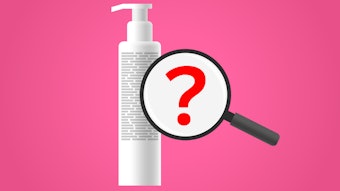
According to a report by Bergeson and Campbell, P.C., on June 12, 2024, the U.S. District Court for the Eastern District of California ruled in favor of the Personal Care Products Council (PCPC).
Log in to view the full article
According to a report by Bergeson and Campbell, P.C., on June 12, 2024, the U.S. District Court for the Eastern District of California ruled in favor of the Personal Care Products Council (PCPC).
The PCPC alleged the California Office of Environmental Health Hazard Assessment (OEHHA) violated the First Amendment by requiring a warning for “cancer as applied to Listed Titanium Dioxide (i.e., titanium dioxide that consists of airborne, unbound particles of respirable size) in cosmetic and personal care products.”
The court granted an injuction to prevent the California Attorney General and any private citizen enforcers from enforcing Prop 65’s warning requirement.
See archived: Urban Decay Faces Lawsuit Over Respirable TiO2 in Eyeshadow Palettes
Why the Warning Requirment?
TiO2 was added to Prop. 65 in 2011 after the International Agency for Research on Cancer (IARC) classified it as a Group 2B agent possible of causing cancer when present as "airborne, unbound particles of respirable size."
Per OEHHA, the Safe Drinking Water and Toxic Enforcement Act of 1986, referred to as Prop. 65, "requires businesses to provide a clear and reasonable warning before they knowingly and intentionally expose people to a chemical listed as a carcinogen or reproductive toxicant."
It is this warning mandate that has opened the door to more than 600 Notices of Violation for the presence of titanium dioxide in cosmetics, per Greenberg Glusker LLP. The source adds that cosmetic firms have struggled to defend themselves "due to the absence of a set 'safe harbor' threshold for titanium dioxide, leaving uncertainty about when a warning is necessary."
See archived: PCPC Urges Action on TiO2's Prop 65 Listing
Questionable Risk
Furthermore, as Bergeson and Campbell, P.C., notes, IARC's Group 2B classification was based on evidence of carcinogenicity in animals and not humans. Also, more recent studies have yielded mixed results; one published in 2022 in Scientific Reports found no evidence for carcinogenicity of TiO2 nanoparticles in an inhalation animal model.
In Europe, the Scientific Committee on Consumer Safety (SCCS) issued an opinion in 2020 that "the use of pigmentary TiO2 up to a maximum concentration of 25% in a typical hair styling aerosol spray product is not safe for either general consumers or hairdressers." However, the SCCS also determined "the use of pigmentary TiO2 in loose powder up to a maximum concentration of 25% in a typical face makeup application is safe for the general consumer."
The committee added that these conclusions are based on safety assessments of TiO2 in the context of possible classification as category-2 carcinogen (via inhalation).
"This means that the conclusions drawn in this opinion are applicable to the use of pigmentary TiO2 in a cosmetic product that may give rise to consumer exposure by the inhalation route (i.e., aerosol, spray and powder form products). As such, the opinion is not applicable to any pearlescent pigment because of the composite nature of such materials, of which TiO2 is only a minor constituent."
'No Significant Risk Level' Guidance
While the inhalation risk may be inconclusive, the OEHHA responded to the need for a "safe harbor" threshold for determining when a warning is not required. The OEHHA proposed adopting a “No Significant Risk Level” (NSRL) under section 25705(c) for “titanium dioxide (airborne, unbound particles of respirable size).” The proposed NSRL would apply when the daily average exposure level is at or below both of the following.
- For airborne, unbound particles with diameters of 10 micrometers (µm) or less, the proposed NSRL is 440 micrograms (µg); and
- For airborne, unbound particles with diameters of 0.8 µm or less, the proposed NSRL is 44 µg.
Public Comments Accepted Through July 1
At the request of the PCPC and the American Chemistry Council (ACC), the OEHHA has extended the deadline for public comments on amending Title 27, California Code of Regulations, Section 25705(b), to include the proposed NSRL for titanium dioxide (TiO2) (airborne, unbound particles of respirable size). OEHHA will now accpet comments on the proposed regulation by July 1, 2024.










